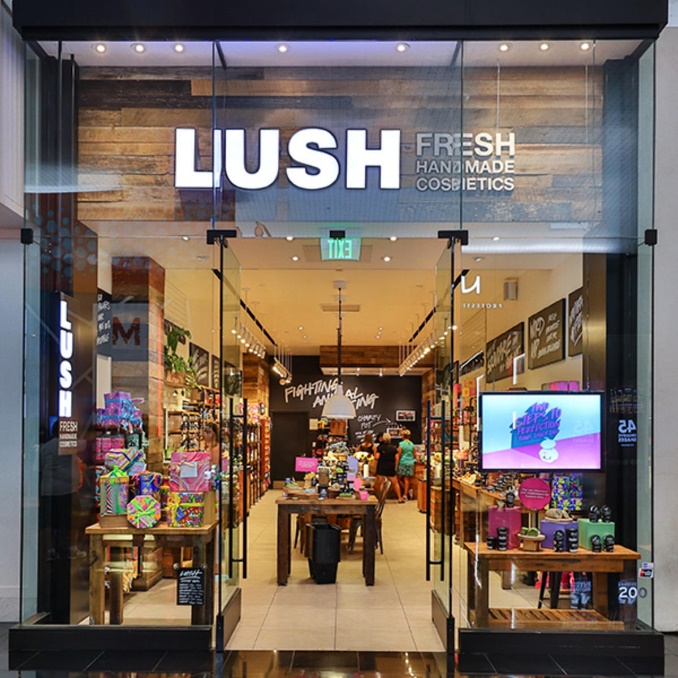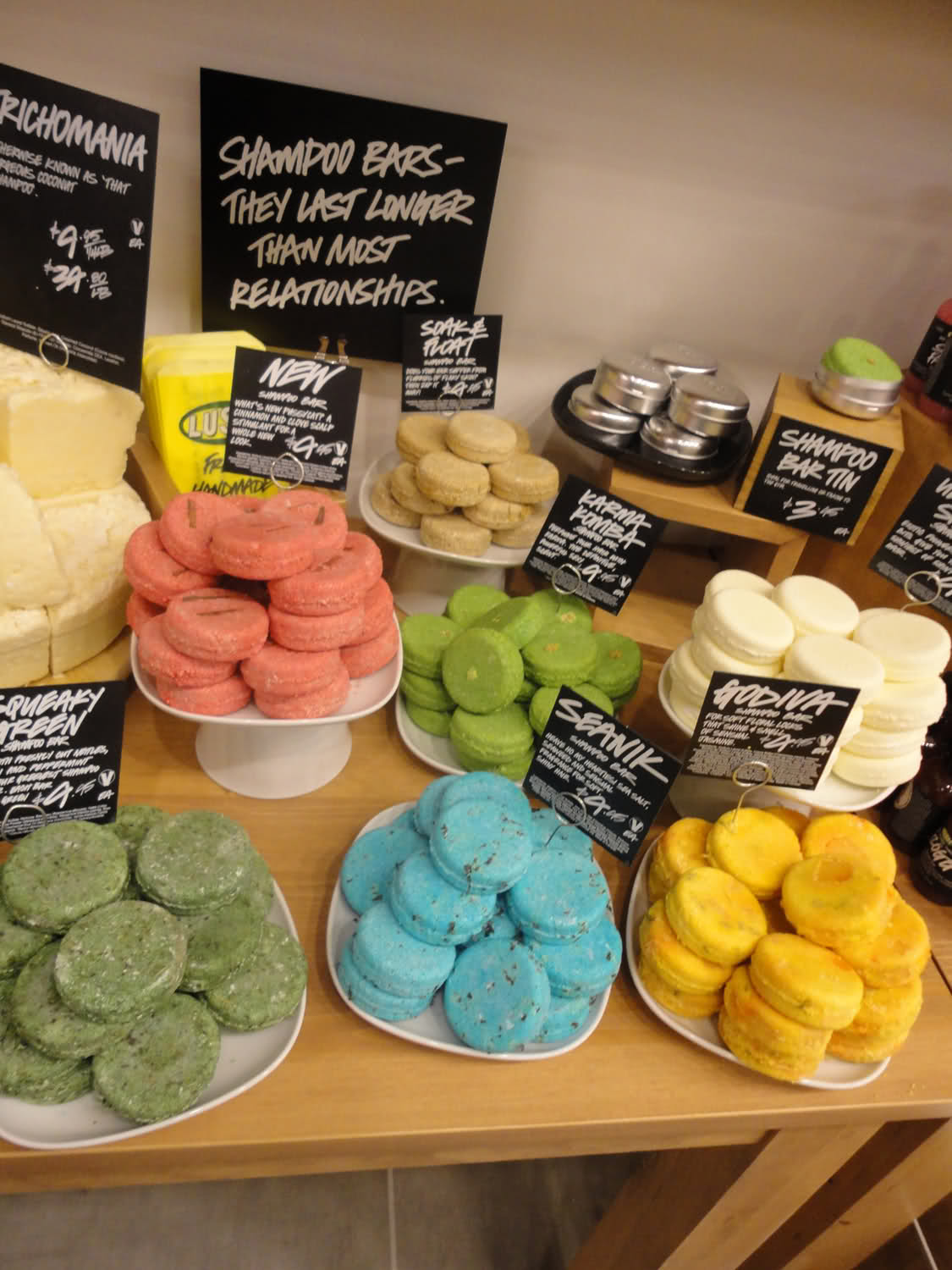Introduction
Lush Fresh Handmade Cosmetics is a burgeoning beauty cosmetics company that presents itself as a socially responsible enterprise. Its products are made of natural ingredients, such as fruits, vegetables, seeds, and others (Packham 2021). The company pursues a policy of protecting nature and animals by encouraging recyclability and standing against animal cruelty – 80% of its products have not been tested on animals, and the other 20% having done so only due to regulations imposed on the product (Loeb 2017).
Lush demonstrates that colors and fonts chosen to represent a brand is not what ultimately defines success, but rather the quality and practices associated with the brand (Bom et al. 2019). For Lush, brand perception is reality, and they seek to shape that perception by engaging with consumers and acting in a socially responsible way, which is what their target audience wants them to be.
Thesis: Lush Fresh Handmade Cosmetics maintains the consistency of their brand image of a sustainable, natural, and eco-friendly beauty product by encouraging recycling, using package-less practices, choosing natural and vegan materials to produce their cosmetics, and not engaging in traditional advertising, relying on word of mouth as means of showing sincerity and saving the environment.
Introducing the Brand
Lush is a multinational corporation specializing in handmade beauty products. They provide options for socially-conscious customers in terms of bath, body, hair, and skin care cosmetics (Shum 2020). Some of their most famous products include fizzy bath bombs, dry shampoos, seed-and-flower petal soaps, and many others. 85% of their products are certified vegan.
The company has over 900 shops in 49 countries, with the largest market being the US, with 200 shops (Craft Co 2021). Its worldwide sales fluctuate between 700-900 million dollars in revenue per year (Statista 2019). It is ranked in the top 50 companies by Beauty Inc. (WWD Staff 2016), and is expecting growth despite the setbacks posed by the COVID-19 crisis, due to a growth in digital sales.
The company brand’s strengths lie in its association and presentation as an eco-friendly and ethical company. It purposefully does not engage in practices that may harm the environment, encourages recycling efforts in its customers, and promotes products not associated with animal cruelty (Wallace et al. 2020). Such practices encourage buyers to make moral purchases and return to the shop again and again in order to make them.
Lush revolves around networking and is popular among the younger generations (Wakefield-Rann 2017). The weaknesses to its brand promotion strategy revolve around some of the concepts that do not mesh well with the logic of the market (Do 2019). Lush practically does not engage in brand promotion the same way other companies do – through advertising, as they believe that it is wasteful and that genuine intent will eventually win them the market.
Analysis
To demonstrate Lush’s brand strategy in action, three examples will be analyzed – the company logo, the shop interior design, and the product design. They will be measured against the relationship with the target audience of the product. As it stands, Lush’s product line aims at the middle and upper-middle class of environmentally-conscious youths (Sahota 2014). It is done because the company’s products are relatively expensive due to their hand-made properties of it as well as the limitations placed on the materials available for use (Sahota 2014). Thus, the design has to appeal to that kind of crowd.

Lush’s brand logo is nothing particularly special – it is written with a white font over a black background, stating the name of the company and what they sells: handmade beauty products (See Fig. 1). Its design has similar traits to many other beauty products, such as Nivea, Loreal, Camay, and others, which feature a relatively unrepresentative logo, as such have grown to be associated with beauty products in the minds of the customers (Aronczyk 2016). One difference is the addition of the “fresh handmade cosmetics” line, which tells the customer about what kind of products the shop sells even before they see it, thus focusing the attention on these particular selling points (Lalaounis 2020).
Brand and product promotion is largely reliant on word-of-mouth to attract new customers, and visual cues to make the first impression. While this type of promotion does not garner as large of an audience as online advertising, TV commercials, or paper leaflet spamming, it does ensure a much higher chance of getting a person to visit and actually buy the product (Kim and Hanssens 2017). Word-of-mouth relies on the trust in the judgment and experiences of their peers (McKee and Gerace 2018).
The visual part of attraction and promotion relies on using bright, natural colors associated with organic products (See Fig. 2) (Hunjet and Wuk 2017). Lush shops look much like candy stores, only instead of selling food they are selling soaps (Yezierska 2021). In so doing, they engage another sense of the customer, though inadvertently, which is that of hunger (Sama and Trivedi 2019).

Finally, the product design acts the part to convey the message of recyclability, organic naturality, safeness, and eco-friendliness. All products are wrapped either in paper, which is a biodegradable material, or organic cellulose, which serves as a natural alternative to plastic (Lin et al. 2018). Some products, such as dry shampoos and soaps, are sold without a wrapper, to reduce consumption of resources (See Fig. 3) (Qalati et al. 2020).
Soaps and other products use organic materials, such as seeds, flower petals, and fibers in order to replicate some of the qualities of regular health products, only with less impact on the environment (Amberg and Fogarassy 2019). The staff engages the customers as well, propagating the message and the values of the company, using them as an additional selling point (Dangelico and Vocalelli 2017).

Conclusions
Lush utilizes an unorthodox, but effective strategy to advertise its products and promote its brand name, cementing it in the minds of the users of their products. The design of the products attracts attention, showing off their unique properties, and engaging different senses in the customers. The logo design is fairly standard but informative nonetheless, engaging individuals interested in handmade cosmetics.
Finally, the company’s vision and mission are effectively demonstrated through their recycling practices, the choices of materials, and information policies. They allow lush to form a specific brand perception of their products, convincing their customers that they are a company that thinks about social responsibility, and makes their products and prices more attractive because of that. It forms a back-and-forth bond between the consumer and the company, with consumers expecting Lush to adhere to these environmentally-friendly practices, and the company rewarding their faith by doing so. In the end, both Lush and its audience are making a difference in the world.
Reference List
Amberg, N. and Fogarassy, C. (2019) ‘Green consumer behavior in the cosmetics market’, Resources, 8(3), pp. 137-147.
Aronczyk, M. (2016) ‘Market (ing) activism: Lush cosmetics, ethical oil, and the self-mediation of protest’, JOMEC Journal, 4, pp. 1-24.
Bom, S., Jorge, J., Ribeiro, H. M. and Marto, J. (2019) ‘A step forward on sustainability in the cosmetics industry: a review’, Journal of Cleaner Production, 225, pp. 270-290.
Craft Co. (2021) ‘Lush’. Web.
Dangelico, R. M., & Vocalelli, D. (2017) ‘ “Green Marketing”: an analysis of definitions, strategy steps, and tools through a systematic review of the literature’, Journal of Cleaner Production, 165, pp. 1263-1279.
Do, T. (2019) ‘The impact of the tagline on brand image: A consumer experiment with a handmade locally brand’, Hanken School of Economics. Web.
Hunjet, A. and Vuk, S. (2017) ‘The psychological impact of colors in marketing’, International Journal Vallis Aurea, 3(2), pp. 42-54.
Kim, H. and Hanssens, D. M. (2017) ‘Advertising and word-of-mouth effects on pre-launch consumer interest and initial sales of experience products’, Journal of Interactive Marketing, 37, pp. 57-74.
Lalaounis, S. T. (2020) Strategic brand management and development: creating and marketing successful brands. New York, NY: Routledge.
Lin, Y., Yang, S., Hanifah, H. and Iqbal, Q. (2018) ‘An exploratory study of consumer attitudes toward green cosmetics in the UK market’, Administrative Sciences, 8(4), 71-76.
Loeb, W. (2017) ‘Lush beauty: taking the industry by storm thanks to young love’, Forbes, (April). Web.
McKee, R. and Gerace, T. (2018) Storynomics: Story-driven marketing in the post-advertising world. London: Hachette UK.
Packham, M. (2021) ‘Business for good brand strategy case study: Lush’, A Brand is not a Logo, Web.
Qalati, S. A., Li, W., Mirani, S. H., Sohu, J. M., Hussain, R. Y. and Ahmed, N. (2020) ‘The antecedents of green consumer behavior the mediating role of brand image in the cosmetic industry’, Sukkur IBA Journal of Management and Business, 7(1), pp. 19-39.
Sahota, A. (2014) Sustainability: how the cosmetics industry is greening up. West Sussex, UK: Wiley.
Sama, R. and Trivedi, J. P. (2019) ‘Factors affecting consumers’ loyalty towards halal cosmetics: an emerging market perspective’, International Journal of Business and Emerging Markets, 11(3), pp. 254-273.
Shum, K. (2020) ‘How cosmetics retailer Lush is making purposeful profit through circular processes’, GreenBiz, Web.
Statista. (2019) ‘Revenue of Lush Cosmetics Limited’. Web.
Wakefield-Rann, R. (2017) Sustainable management of luxury. Singapore: Springer.
Wallace, A. A., Luttrell, R. and Torres, K. (2020) ‘LushUK Goes “All In” on Influencers’, Research Perspectives on Social Media Influencers and Brand Communication, 4(3) pp. 87-92.
WWD Staff. (2016) ‘Beauty Inc.’s Top 100 companies’, Web.
Yezierska, A. (2021) Soap and water. New York, NY: Simon and Schuster.